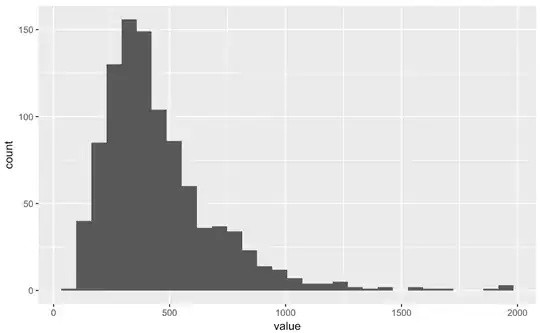Surprisingly, I can't find a discussion on calculating confidence intervals for the mean $EY=e^{\mu+\sigma^2/2}$ of the lognormal distribution. My question goes beyond what is covered in the link below, and is specific to the package EnvStats.
Confidence Interval for Mu in a Log normal Distributions in R
Say I have some lognormal data:
mydat <- data.frame(value = rlnorm(1000, meanlog = 6, sdlog = .5))
I use EnvStats::elnormAlt to estimate parameters for the lognormal distribution mydat.
elnormAlt(mydat$value, method = "mvue", ci = FALSE, ci.type = "two-sided",
ci.method = "land", conf.level = 0.95)
And obtain:
Results of Distribution Parameter Estimation
--------------------------------------------
Assumed Distribution: Lognormal
Estimated Parameter(s): mean = 454.7097844
cv = 0.5359667
Estimation Method: mvue
Data: mydat$value
Sample Size: 1000
When I change the argument ci = TRUE, I get the error:
Error in integrate(density.fcn.qlands.t, -pi/2, theta, nu = nu, zeta = zeta) :
non-finite function value
My questions are twofold:
- Can someone succinctly explain the mathematical meaning of
cv? - What is the meaning of the error message I'm getting, and how can I calculate confidence intervals using the Land (Cox) method?
